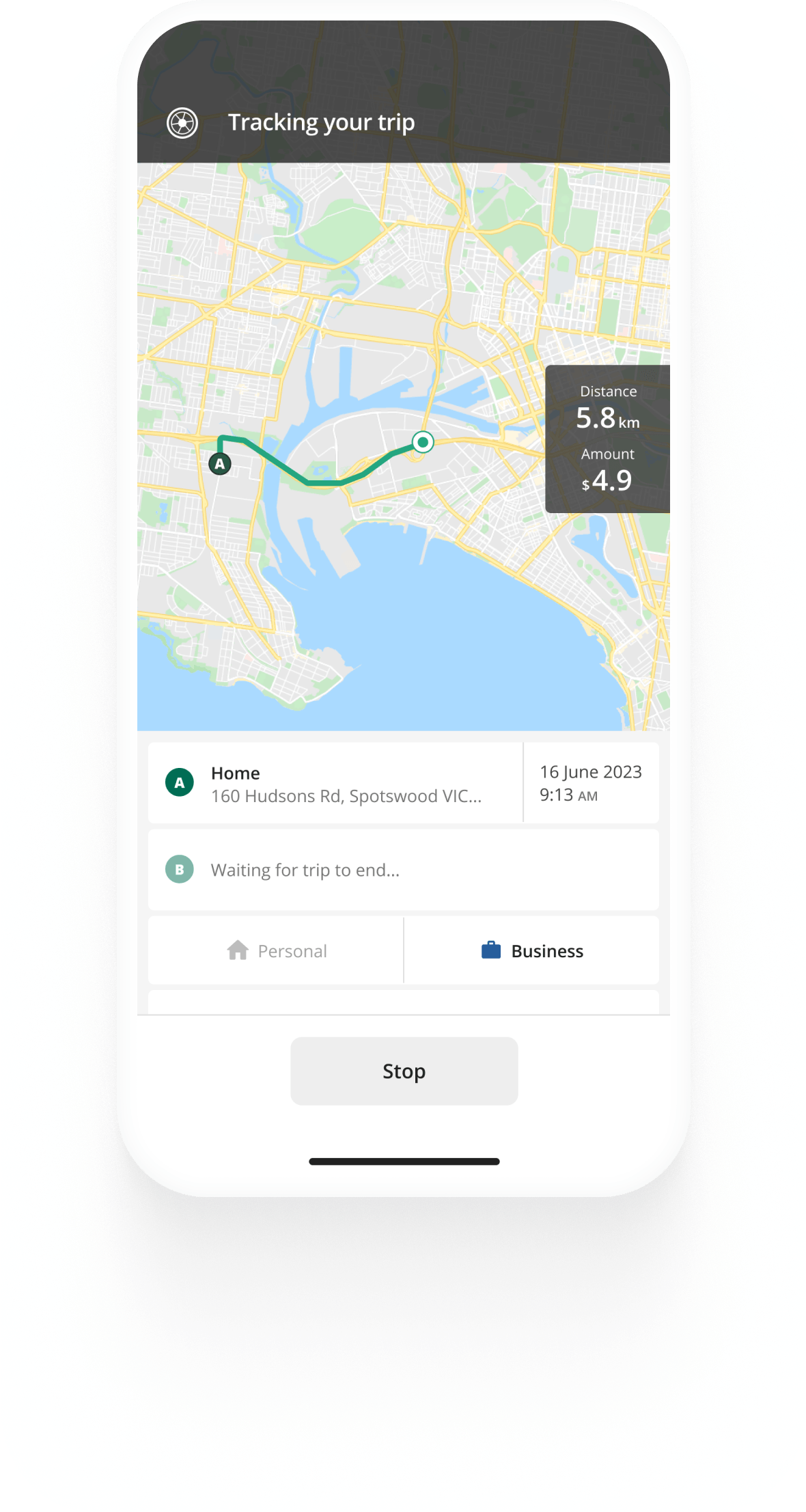Track mileage automatically
Get started.svg)
Car Parking Fringe Benefits Tax Guide
You must pay car parking fringe benefits tax when you provide car parking spaces to your employees under certain conditions.
Understanding car parking Fringe Benefits Tax (FBT) is essential for you as an employer to comply with ATO regulations and help you manage business costs effectively.
How car parking FBT works
- The taxable value of car parking fringe benefits is subject to a 47% tax rate. The tax applies when you provide a car parking space to an employee and all the following conditions are met:
- The parking space is at or near your business location.
- The space is within 1 km of a commercial parking station with a fee higher than the car parking threshold. The current car parking threshold is $11.03 for the FBT year ending 31 March 2026.
- The car is parked for more than 4 hours between 7.00 am and 7.00 pm.
- The employee drives their (personal or company-provided) car between home and work.
The ATO provides a document with more details about these conditions for employers.


Kilometre tracking made easy
Trusted by millions of drivers
Automate your logbook Automate your logbook

Automatic mileage tracking and ATO-compliant reporting.
Get started for free Get started for freeHow to calculate car parking FBT
To calculate the taxable value of car parking fringe benefits, you need to:
-
Determine the value of the fringe benefit. Use one of the following methods:
- Commercial parking station method - Value based on fees charged by commercial parking stations.
- Market value method - Requires a valuation from an independent valuer.
- Average cost method - The average of rates from commercial parking stations over the FBT year.
- Statutory formula method - Simplified calculation based on a set formula.
- 12-Week register method - Record actual usage over 12 weeks and extrapolate for the year.
- Multiply by the number of days you provide the benefit - multiply the daily value by the number of days the parking benefit is provided.
- Reduce by employee contributions - subtract any amount employees pay towards the parking.
Other factors affecting FBT for car parking
Increased car parking charges
Car parking charges have increased year on year, which has triggered new FBT liabilities for some employers.
For example, a car parking station that charged $10.90 in 2024 might have increased to $12.03 in 2025. This would exceed the FBT threshold and create a new liability. Monitor changes in parking fees and assess whether the rates at the start of the FBT year exceed the threshold.
Work-from-home arrangements
Under the statutory formula method, an employer is deemed to provide a car parking benefit 228 times during the FBT year. This doesn’t take into account actual usage and may not accurately reflect flexible work-from-home arrangements.
Consider using the 'actual' method or the 12-week register method instead. These methods are more likely to ensure FBT costs accurately represent the car parking benefits you provide to employees.
You don’t have full-year car parking data
If you don’t have full-year parking data, use the 12-week register method. This involves keeping records of the actual number of car parking benefits provided over a continuous 12-week period representative of the FBT year.
The ATO provides a calculator to help you calculate the car parking FBT you must pay.
ATO FBT car parking exemptions
There are car parking exemptions you can make use of as an employer.
Small business exemption
This applies to businesses with a gross total income of less than $10 million or aggregated turnover of less than $50 million, and the parking is not in a commercial car park.
Disability exemption
This exemption is for employees with a valid accessibility parking permit displayed on their car.
Minor benefits exemption
If the benefit is less than $300, treating it as a fringe benefit is unreasonable.
Exempt employers
Charities, public benevolent institutions, health promotion charities, and similar organisations are exempt from this tax.
Recordkeeping for car parking FBT
Maintaining accurate records is crucial for compliance. Be sure to keep:
- Parking usage records - Details of parking provided to employees.
- Valuation documentation - Evidence supporting the method used to calculate the taxable value.
- Employee contributions - Records of any payments made by employees towards parking costs.
- 12-week register - If using this method, keep detailed logs for the recorded period.
FAQ

Tired of logging mileage by hand?
Effortless. ATO-compliant. Liberating.
Top posts
- Sole Trader Tax Deductions: An Essential Guide
- Cars Exempt from FBT
- Company Car Policy: Complete Guide & Downloadable Template
Related posts
ATO Mileage Guide
Latest update: 23 June 2025 - 5 min read
Learn about the rules of reimbursing employees for their car expenses or deducting expenses as an employee or self-employed individual.
Sole Trader Tax Deductions: An Essential Guide
Latest update: 22 October 2025 - 5 min read
Maximise your income with our guide to sole trader tax deductions. Learn about deductible business expenses and how to claim them.
Cars Exempt from FBT
Latest update: 8 July 2025 - 5 min read
Types of cars exempt from Fringe Benefits Tax, together with exemption conditions and a list of popular models that qualify.

.svg)
